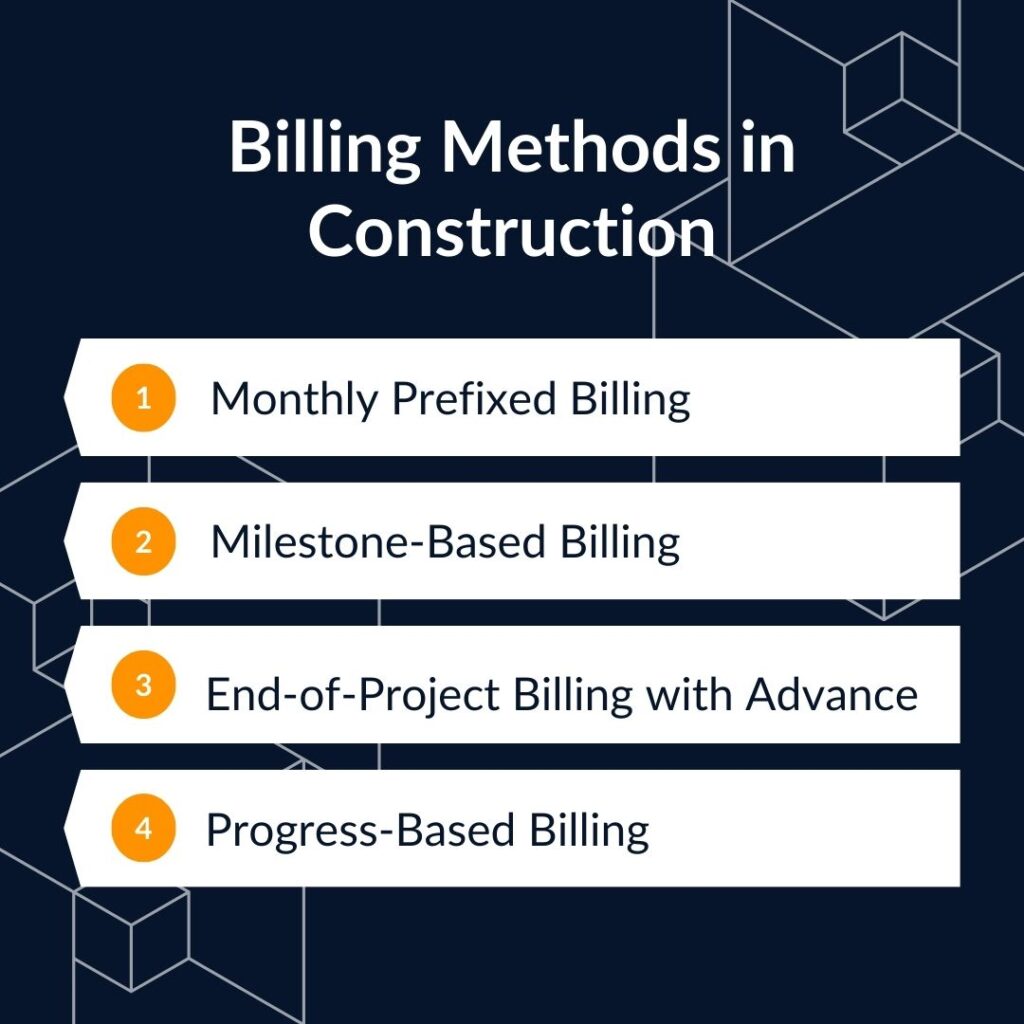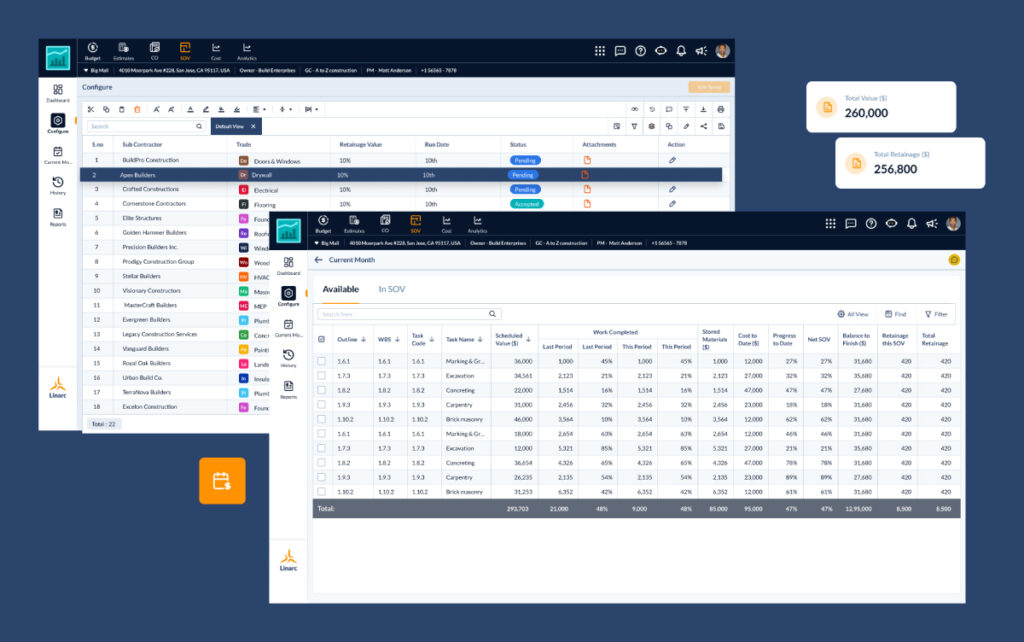.jpg)
A $50 million hospital project has hit a critical halfway mark. Contractors are working hard to lay the last foundation, but things aren’t going smoothly. Payments from the client are tied to specific milestones, but delays in approving progress reports are slowing everything down. To make things worse, subcontractors are submitting invoices with manual errors, leading to even more payment delays. Now, the entire project is at risk.
Labor costs are rising, and suppliers are hesitant to send materials without quick payments. The project could come to a standstill, and sadly, this isn’t an unusual scenario in construction. Delays often happen because of inefficient billing systems, and these delays can spiral into bigger problems.
Progress billing is one solution—a method where payments are linked to project milestones, ensuring a steady cash flow as work gets done. But even progress billing isn’t foolproof when it comes to avoiding delays or errors. The real game-changer? Automation. This article looks at how automating progress billing can streamline processes, reduce delays, and minimize costly mistakes.
What is Progress Billing and Why It Matters
Progress billing is a way of charging for work based on the percentage of the project completed, instead of waiting until everything is done. In construction, automated billing helps contractors get paid at various stages, tied to specific milestones. Unlike traditional billing, where payments are made upfront or after the project is finished, progress billing keeps money flowing as work progresses.
Challenges of Traditional Manual Billing Processes
Manual billing processes in construction and other project-based industries can significantly impact project timelines, resource allocation, and cash flow management. Here are the key limitations:

- Cash Flow Bottlenecks: Cash flow is the lifeblood of any construction project. Inconsistent or delayed billing can lead to material shortages, delays in acquiring necessary equipment, or even crew layoffs. These issues directly affect the construction schedule and can cause cascading delays in the entire project. As projects become more complex, the need for consistent cash flow intensifies, making timely billing a crucial component for ensuring smooth project execution.
- Inconsistent Communication Between Stakeholders: In manual billing systems, there is often poor communication between various stakeholders, especially in projects with multiple subcontractors. Each subcontractor might have different payment terms, invoicing schedules, and approval processes, leading to confusion and delays. In some cases, payment disputes arise because there is no centralized system to track progress and billing information in real time. This fragmentation can result in project disruptions and strained relationships between contractors, clients, and suppliers.
- Lack of Real-Time Insights: In manual systems, there is often no mechanism for real-time updates or notifications. Stakeholders are left waiting for approvals or payment confirmations, leading to bottlenecks that slow down the billing cycle. Automated systems, by contrast, offer real-time notifications, allowing all parties to stay informed about the status of the billing process and reducing potential delays.
- Approval Delays: Traditional billing processes often involve multiple steps, from preparing invoices to gaining approvals from various stakeholders. This multi-step process can create significant delays, particularly when approvals need to be routed through several layers of management or when stakeholders are dispersed across different geographic locations. These delays can cause extended project timelines, which can, in turn, frustrate clients and increase costs.
- Human Errors: Manual billing systems are highly susceptible to errors in data entry, calculations, and communication. Even small mistakes, such as incorrect quantities or pricing, can lead to invoice discrepancies that complicate payment processes.
- Time-Consuming Procedures: The reliance on paper documents and manual tracking systems makes the billing process labor-intensive. Administrative tasks, including billing and collections, consume a significant amount of time that could otherwise be spent on value-adding activities.
Role of Progress Billing in Large Construction Projects
In large construction projects, progress billing becomes an important source for contractors to stay financially stable while keeping things transparent at every stage. These projects stretch over months or even years, and they need a lot of upfront cash—materials, labor, equipment, you name it. If contractors had to wait until the end to get paid, the financial pressure would be immense. But with progress billing, contractors can:
- Keep their cash flow in sync with the project’s progress, so they have what they need to move on to the next phase.
- Cut down financial risks since payment is linked to what’s actually been done—less chance of doing all that work and not getting paid.
- Bring in transparency by reporting progress regularly to stakeholders, who can review and approve payments based on what’s finished.
Billing Methods in Construction
There are several billing methods depending on the project’s size and contract terms:

- Monthly Prefixed Billing: This is common in long-term contracts, with payments made at fixed intervals—usually monthly. It’s great for flexible projects where ongoing services are reviewed and adjusted regularly.
- Milestone-Based Billing: Payments kick in when specific phases are completed. This method works for projects with clear stages and deliverables.
- End-of-Project Billing with Advance: This is used for smaller jobs like renovations. Contractors get paid upfront, and the rest comes at the end. However, this method is risky for big projects since it can strain cash flow.
- Progress-Based Billing: Payment is based on how much of the project is actually done. This method works for larger, complex jobs where keeping cash flow in line with progress is crucial.
Why Progress Billing is Beneficial for Everyone
Progress billing is a win-win for both contractors and clients:
- Contractors get regular payments, so they don’t have to wait until the end to cover costs. It reduces financial stress and helps avoid project delays.
- Clients get better visibility and control over spending, ensuring that payments are tied to actual progress. It cuts down the risk of overpaying and makes sure the work is done before releasing more funds.
- Collaboration improves too. Progress billing keeps contractors, clients, and stakeholders in constant communication, making sure issues are tackled early on.
In short, progress billing keeps things running smoothly, financially stable, and accountable for everyone involved.
How Linarc Streamlines Progress Billing
Managing payments in construction can be tricky, but it’s essential to keep projects on track. Linarc simplifies this by using Schedule of Values (SOV). It’s a key part of handling progress billing.
Understanding the Schedule of Values (SOV)

The Schedule of Values (SOV) is a critical document that itemizes the total contract amount into individual pay items. It serves as a detailed roadmap, illustrating how the entire contract sum is allocated across various aspects of the project, such as labor, materials, equipment, and other expenses. By basing the SOV on the project’s approved budget, Linarc facilitates a clear understanding of financial commitments, enabling better decision-making for both general contractors (GCs) and subcontractors (SCs).
The Progress Billing Process: A Step-by-Step Overview

- Monthly Compilation: Each month, subcontractors systematically compile a report detailing the tasks completed during that period. This includes progress percentages and expenses incurred across various categories—labor, materials, and equipment. Linarc’s intuitive interface allows SCs to easily input and track these details in real-time, minimizing errors and discrepancies.
- Submission of the SOV: After gathering the info, the subcontractor sends the SOV to the general contractor. Linarc automates this, sending notifications to everyone involved and securely saving the documents for easy access later.
- Thorough Evaluation and Approval: The project manager at the GC’s company reviews the submitted SOV for accuracy. Linarc streamlines this evaluation with built-in tools that flag inconsistencies and provide insights into project progress, making it easier for GCs to validate the claims made by SCs. This collaborative approach enhances communication, reducing the likelihood of disputes.
- Invoice Generation: Once the SOV is approved, the subcontractor can create an invoice based on it. Linarc automatically generates invoices, ensuring they’re accurate and match the approved values. This speeds up the whole billing process and helps payments go through faster.
- Efficient Payment Processing: Upon receiving the invoice, the GC processes the payment based on the approved SOV. With Linarc, payment tracking is transparent, allowing both GCs and SCs to monitor payment statuses in real-time. This visibility fosters trust and accountability among all parties involved.
- Inclusion of Additional Parameters: The SOV also covers critical aspects like unused or stock materials purchased by the SC and retainage amounts. By incorporating these elements, Linarc provides a comprehensive view of project finances, ensuring that all expenditures are accounted for and facilitating better cash flow management.
Choosing the Right Progress Billing System for Your Projects
When it comes to progress billing, using Linarc can really change the game. Here’s how:
- Enhanced Transparency: Imagine having all your Schedule of Values (SOV) and related documents in one place. That’s what Linarc offers. Everyone involved gets access to real-time financial information, which encourages open communication and teamwork.
- Reduced Disputes: We all know disputes can slow things down. With a detailed and clear SOV, the chances of discrepancies are cut down. This clarity streamlines communication, meaning fewer headaches over billing and payments.
- Improved Efficiency: Administrative tasks can be a drag. Linarc’s automation tools lighten that load, so your team can focus on what truly matters: the project itself, not the paperwork.
- Data-Driven Insights: Knowledge is power, especially when it comes to managing finances. Linarc offers analytics that not only help with current projects but also inform future planning and budgeting. This means you’re constantly improving your financial management practices.
Automate Billing with Linarc!
Simplify your billing process with Linarc—a powerful platform engineered for modern project management and automated billing solutions. With Linarc, you can integrate automated invoicing, real-time milestone tracking, and detailed reporting into your operations, empowering your team to focus on what matters most: delivering successful projects on time and within budget.
Visit Linarc today to ensure project success and sustainable growth!


.webp)
.webp)
.webp)

